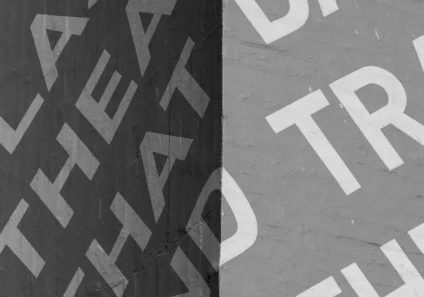
This article was co-written by David Barnett and Bryn Anderson, from Valuation Consulting.
Introduction
One of the long-standing questions in brand protection (BP) relates to the feasibility of quantifying the value (or return-on-investment – ROI) of a BP programme of monitoring and enforcement. The information is most usually required either to justify the spend on the BP initiative in the first place, or to quantify its value after a period of utilisation.
A number of standard methods have been established to quantify BP ROI, usually involving consideration of the ‘cost’ of each infringement being active, and/or the proportion of ‘lost’ revenue which could be reclaimed following its removal. There are a number of different types of circumstance in which an appropriate standardised methodology can be formulated[1] (albeit each with their own caveats), such as the acquisition of a domain by a brand owner and re-direction (and monetisation) of its traffic to an official website, and the takedown of counterfeit (or otherwise infringing) goods from an e-commerce marketplace, and the substitution (with an appropriate conversion rate) of counterfeit sales with legitimate sales. Outside these areas, similar principles can be applied to other types of takedowns, in some cases utilising data ‘proxies’ where the required information is not available[2],[3].
It is also possible to extend these basic ideas to encompass other approaches, such as consideration of the long-term impact of a BP programme (changes over time in numbers or types of infringement, ‘cleaning’ search-engine results, gaining ‘ownership of the buy button’ on e-commerce marketplaces[4], increases in traffic to official channels, etc.) – or, equivalently, the cost of stopping the enforcement.
What is less frequently incorporated into these methodologies are considerations of the impact on brand value of a programme of monitoring and enforcement. In this article, we provide an overview of the related concepts.
Brand value and brand protection
- Key ideas
The intellectual property (IP) associated with a brand has an intrinsic value, including – but not limited to – the potential to generate future revenue[5]. Key concepts include the ideas of brand value itself, and brand equity – the value of products and services associated with the brand[6]. In attempting to quantify these factors, a number of inputs are relevant, including the costs to create the brand assets initially, consideration of planned or natural brand obsolescence, and the use of ‘royalty relief’ methodology – essentially, considering the equivalent cost for licensing the IP if it were not owned by the brand. These parameters are themselves affected by factors such as brand visibility (customer awareness, market perception, etc.) and customer loyalty (which drives the potential to generate income)[7].
With these ideas in mind, there is the potential for infringements and other instances of brand abuse to adversely affect brand value. Damaging factors might typically include:
- Unauthorised use of IP (sale of counterfeits, instances of fraudulent websites, false claims of affiliation, etc.)
- Brand dilution, genericism (the evolution of a brand name into a generic descriptor of the product type in question), sale of lookalike products or brands[8]
- Reputational damage (boycott activity and activism, brand association with undesirable content, etc.)
There are also complicating factors, such as the fact that higher levels of abuse can be taken to imply that the brand is a desirable one, and therefore has an intrinsic greater brand value.
B. Brand value and enterprise value
Figure 1 shows the results from a global study[9] looking (year-on-year) at the total global enterprise value of listed companies. The principal components of overall company value are:
- Net tangible assets (light blue) – i.e. property etc.
- Intangible assets disclosed on the corporate balance sheet – e.g. assets (including brands) pertaining to company acquisitions, patents held, customer contracts, etc. (dark blue) and acquired ‘goodwill’ (dark green)
- Other (principally undisclosed) intangible assets (grey) – i.e. the difference between the corporate ‘net book’ value of balance-sheet assets and the enterprise value as determined by the financial market, encompassing factors such as internally generated brand value, goodwill, etc. – the ‘premium’ on the business

Figure 1: Total global enterprise value of listed companies and its constituent components (© Brand Finance plc, 2022)
Overall, almost 50% of global enterprise value is ‘intangible’, of which only a small proportion is reflected on the balance sheet. Internally generated brand value itself typically represents a significant part of enterprise value and naturally varies by industry type, but is potentially around 20% on average across all sectors.
The significant value of brand – noting that the numbers in Figure 1 are in trillions of US dollars – highlight the importance of adequate investment in, and management and protection of, company brands.
C. The impact of (doing or not doing) brand protection
A trademark targeted by high volumes of unauthorised use will be affected through both ‘brand’ and ‘financial’ impacts (essentially, the ‘value at risk’), largely driven by changes in customer perception and behaviours. Conversely, steps taken by the brand owner to invest in and improve brand (and IP) protection can significantly improve brand performance and economic value.
Some of the positive impacts arising from an effective programme of brand protection might typically include:
Brand impacts:
-
- Improved brand awareness / familiarity / loyalty
- Growth of brand perception / reputation
Financial impacts:
-
- Increased sales volume / value (including forecasted values)
- Enhanced brand growth opportunities
- Reduced customer churn
- Lower cost of capital (brand risk)
- Lower operating costs required to address the issues (e.g. enforcement actions, customer education, brand re-designs and marketing, additional product innovation, market research, etc.)
The interplay between these factors is illustrated by the schematic in Figure 2.

Figure 2: Schematic of the impact on brand value of a successful brand protection programme
Brand value can be quantified using a range of standard, established methodologies[10]. Starting with a particular brand valuation, we consider the case where the makes a spend (‘investment’) in a brand protection programme, which might typically be calculated as a percentage of brand value or sales (shown as a cost in red in Figure 2). Following the BP programme, an uplift in both brand strength and financial factors, as discussed above, can be expected. These have a positive additive effect, resulting in a final brand valuation (shown as the light blue bar on the right of Figure 2). If the BP programme has been successful, the uplifts will be greater than the spend (i.e. a positive ROI) and the final brand value will be greater than the initial one (by a net uplift value).
Conclusion and discussion
These concepts present not only an illustration of the importance to brand owners of conducting effective and efficient BP programmes, but also provide the basis of a framework for incorporating considerations of brand valuation into calculations of BP ROI.
Pre-existing brand value is also likely to be one important factor in determining how brands might be affected by infringements in the first place. Some are very seriously affected (in terms of image and reputation) by, say, high levels of counterfeiting , whilst others are able to retain their brand status – perhaps a reflection of product quality and strength of marketing. There is also the question of the level of overlap between the customer markets for counterfeit and legitimate products, and the degree of product confusion. Finally, levels of consumer education and communication by brand owners regarding the adverse effects of non-legitimate products may also be an important driver.
[1] http://www.circleid.com/posts/20201112-brand-abuse-and-ip-infringements-part-2-return-on-investment/
[2] https://www.worldtrademarkreview.com/anti-counterfeiting/return-investment-proving-protection-pays
[3] ‘Brand Protection in the Online World: A Comprehensive Guide’ by David N. Barnett
[4] https://www.linkedin.com/pulse/calculation-return-investment-brand-protection-thoughts-david-barnett/
[5] https://www.ipwatchdog.com/2018/04/24/intellectual-property-valued-selling-business/id=96098/
[6] http://www.circleid.com/posts/20201110-brand-abuse-and-ip-infringements-part-1-brand-impact/
[7] https://www.prophet.com/2016/09/brand-equity-vs-brand-value/
[8] https://www.valuationconsulting.com/insights/vc-brand/valuation-impact-of-lookalike-brands
[9] https://static.brandirectory.com/reports/brand-finance-gift-2022-full-report.pdf
[10] https://www.valuationconsulting.com/insights/vc-brand/brand-valuation-one-of-the-most-significant-sources-of-economic-value-creation








